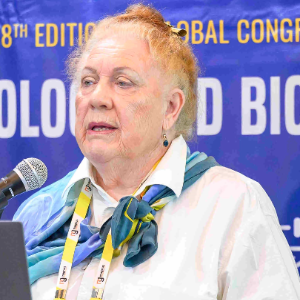HYBRID EVENT: You can participate in person at Singapore or Virtually from your home or work.
Plant Anatomy and Morphology
Plant Anatomy and Morphology
The study of the tissue and cell structure of plant organs is known as plant anatomy or phytotomy. When it comes to plants, anatomy refers to features that can be seen under a high-powered light microscope or an electron microscope.
- Monocot
- Dicot
- Vascular tissue
- Xylem
- Phloem
Morphology is the branch of biology concerned with the form of living entities. Plant morphology, also known as phytomorphology, is the study of a plant's physical form and visible structure, whereas plant anatomy is the study of a plant's interior structure, typically at the cellular/microscopic level. A morphologist compares and formulates opinions about similarities in a variety of plants from the same or different species. Plants' vegetative (somatic) and reproductive structures are studied.
- Homology
- Analogy
- Vegetative character
- Reproductive characters
Committee Members

Mohammad Babadoost
University of Illinois, United States
Srinivasa Rao Mentreddy
Alabama A&M University, United States
Mary Cole
The University of Melbourne, Australia GPB 2026 Speakers

Satya S S Narina
Virginia State University, United States
Sara Hailemariam
Purdue University, United States
Carla Cao
Universidad de Murcia, Spain


Title : Diagnosing plant abnormality
Mohammad Babadoost, University of Illinois, United States
Title : Feed4Food’s living labs aiming for urban food security
Valasia Iakovoglou, UNESCO chair Con-E-Ect, International Hellenic University, Greece
Title : Developing virginia mountain mint (Pycnanthemum Virginianum): As a commercial crop in Alabama, USA
Srinivasa Rao Mentreddy, Alabama A&M University, United States
Title : Isolation and functional properties of biomolecules of plants and its application
Balagopalan Unni, GEMS Arts & Science College (Autonomous), India
Title : Waste streams become resource streams in the circular economy
Mary Cole, The University of Melbourne, Australia
Title : Recent advances in phytochemical techniques
Rameshkumar K B, Jawaharlal Nehru Tropical Botanic Garden and Research Institute, India